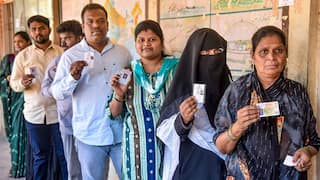Explorer
Demonetisation exercise in 1978: How Morarji's D-drive averted chaos

New Delhi: When India undertook its first demonetisation exercise in 1978, the then Janata Party government had faced the same charge as its counterpart today: of misusing its office to undermine political opponents ahead of a series of Assembly elections. Atal Bihari Vajpayee and L.K. Advani, two of the architects of the yet-to-be-formed BJP, were then part of a government headed by the country's first Gujarati Prime Minister, Morarji Desai. (Narendra Modi is the second.) Assembly elections were due in six states in 1978: Andhra Pradesh, Arunachal Pradesh, Assam, Karnataka, Maharashtra and Meghalaya. Currently, India is heading towards crucial polls in Uttar Pradesh, Punjab, Uttarakhand, Manipur and Goa. Many view Modi's demonetisation drive as an attempt to take the wind out of the sails of the BJP's opponents in these elections, particularly in Uttar Pradesh. Similar fears were expressed in the Lok Sabha on March 21, 1978, when a bill that looked to scrap the existing Rs 1,000, Rs 5,000 and Rs 10,000 notes was put up for discussion and passage. "Now we have got our own doubts about this and the people are thinking whether this bill is intended to curb indirectly the funds of some particular political party before the elections in six states were held," AIADMK member C.N. Visvanathan had said. Congress member Vyalar Ravi had made a similar case, arguing that the move had been "brought on the eve of the elections - as an election stunt". His party colleague K. Lakkappa from Karnataka echoed him. Similar concerns were aired when the Rajya Sabha discussed the bill two days later. Although the disruption in banking was nowhere near the current levels, AIADMK member Noorjehan Razack had suggested the move was a political act rather than a "purposeful, well-directed and well-coordinated offensive against the well-entrenched forces of black money". CPI member Sanat Kumar Raha said the move was a mere "political stunt", executed "because the government wanted to give some radical ideas". Then finance minister H.M. Patel sought to allay these fears in the Lok Sabha. "So far as my friends in the Opposition are concerned, they have become so suspicious that anything that we do, they consider it politically motivated," he said. "Such an economic measure should not have been viewed from that point of view." One key difference, however, separates the previous demonetisation from today's drive. The Opposition had then asked for the widely used 100-rupee notes to be scrapped too, but Patel ruled out an operation on such a huge scale, perhaps thereby sparing the country the sort of disruption it's witnessing today. The Desai government had initially issued an ordinance on January 16, 1978, to demonetise Rs 1,000, Rs 5,000 and Rs 10,000 notes, which together made up less than two per cent of the currency then in circulation. The total number of notes in circulation the day the three denominations were rendered worthless was 8,543 crore. When Modi announced the demonetisation of Rs 500 and Rs 1,000 notes, reintroduced by the Vajpayee government 16 years ago, the number of notes in circulation was 16.4 lakh crore. And the scrapped notes made up 86 per cent of it. -The Telegraph, Calcutta
Follow Breaking News on ABP Live for more latest stories and trending topics. Watch breaking news and top headlines online on ABP News LIVE TV
Read more
Top Headlines
Cricket
World
Maharashtra
India

Sayantan Ghosh
Opinion





































